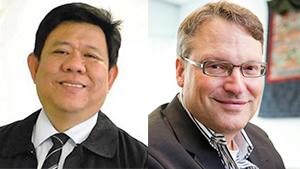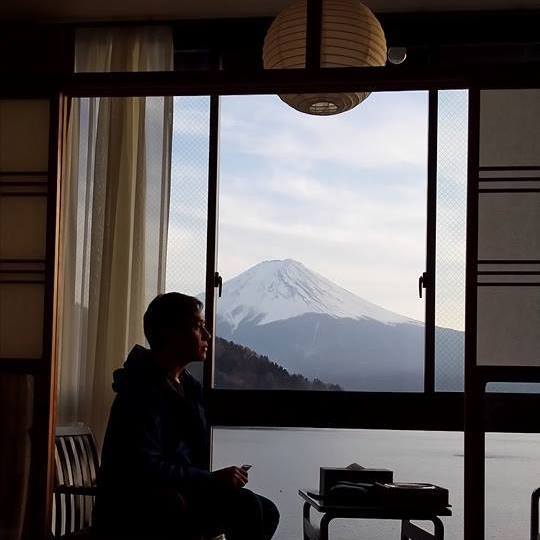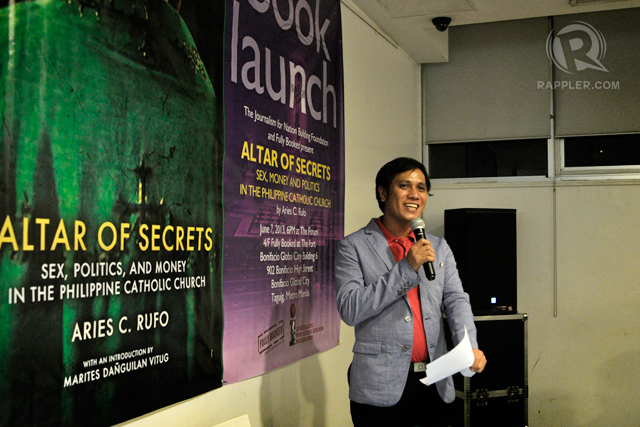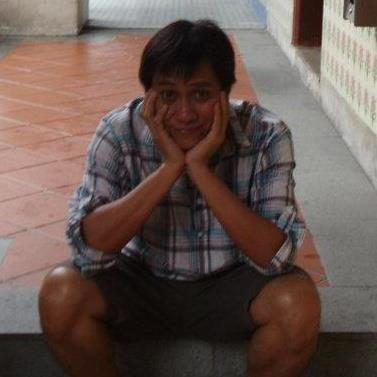
"I would rather have a country run like hell by Filipinos than a country run like heaven by the Americans, because however bad a Filipino government might be, we can always change it [author’s emphasis]," Philippine Commonwealth President Manuel Quezon once said.
Back in the 1950s, the Philippines was among the world’s fastest growing economies. Unlike most of its autocratic post-colonial neighbors, it also boasted an elected legislature and executive leadership, with one of the world’s most liberal and democratic constitutions. It was America’s showcase colony, after all.
Thanks to America’s relatively benign legacy – at least compared to more predatory European colonial powers, particularly France and Netherlands, who brutally occupied Southeast Asia – in infrastructure and basic education, the Philippines also stood as the second least poor (or prosperous) nation in East Asia, although Manila was among the world’s most devastated cities during the brutal World War II.
By the 1980s, after years of predatory and corruption-infested “elite democracy” that paved the way for decades of even more devastating dictatorship, the Philippines was relegated to among the world’s poorest and most indebted nations, precipitating an exodus of millions of Filipinos in search of employment and better life across all corners of the world. By now, not only South Korea, Taiwan, and Hong Kong, but also Singapore and Malaysia overtook it, with Thailand and Indonesia rapidly closing their development gap with the Philippines – and eventually surpassing it.
The Philippines’ humiliating decline in the second half of the 20th century has instilled a deep sense of frustration and suspicion toward the country’s inept ruling class, who never missed an opportunity to ensure their own wellbeing at the expense of the impoverished masses and the (shrinking and overtaxed) middle class.
After the euphoric ouster of the Marcos regime in 1986, the Southeast Asian country largely reverted back to the “elite democracy” of the 1950s and 1960s, where political dynasties, oligopolistic industries, and a privileged few swallowed the country’s wealth and dominated its key economic sectors and political offices.
In the past five years, however, the Aquino administration has instilled some hope in the hearts of the Filipino nation. Despite all its mishaps, many people continue to relish the broadly constructive legacy of the incumbent government, which has brought about years of robust economic growth and sustained, albeit lopsided, anti-corruption initiatives.
Choosing the right one
A commonly heard complaint among many middle class and educated Filipinos is the difficulty of choosing the next Filipino president among the likely candidates, who will soon officially register their bid for top office. None of the leading candidates seem to encapsulate the aspirations of the Philippines’ upwardly mobile citizens, who are desperate to revive the Southeast Asian nation’s fortunes. They want a leader who combines political will with integrity, experience and competence.
But, as one veteran Filipino journalist observes, all three leading candidates, Vice President Jejomar Binay, Senator Grace Poe, and Interior Secretary Mar Roxas are yet to prove whether they are fit for presidency.
Binay, who not long ago was considered as the runaway winner, is confronting at least four separate plunder charges, currently being processed by the Office of the Ombudsman. He has dismissed all the allegations as purely politically-motivated, but his declining numbers reflect growing public suspicion even though he is yet to be held guilty by a court of law. As the former mayor of the Philippines’ financial hub (Makati), Binay has constantly emphasized his administrative credentials, claiming that if he becomes the president he can expand the existing generous welfare system in Makati City to the entire country.
But as prominent Filipino economist Solita Collas-Monsod points out, “Makati’s revenues—from 62,000 business enterprises—is not replicable anywhere,” so obviously the city’s generous welfare is at best a special case. The challenge for any Filipino president is to enhance the country’s weak tax effort, which means going after fat cats that have exploited loopholes in the system, so that it can provide better basic services across the country. All Filipino presidents have fallen short of ensuring they effectively and efficiently tax their populations, especially the powerful rich. Without sufficient revenues, no government can properly operate and serve the citizens.
If Binay wants to stand a chance of winning the elections, he will have to unequivocally dispel any shred of doubt over his integrity, honestly confront the corruption allegations, and engage the middle classes, who await concrete policy proposals on how he seeks to bring about a more effective form of governance to the Philippines (beyond mere slogans).
As for the enormously popular Poe, who is yet to fully warm up her seat in the Philippine Senate, she doesn’t have, to put it mildly, a very extensive track record in government. Though seen as squeaky-clean by most people, the experience factor is a glaring gap in her résumé. Moreover, she is also confronting a tricky legal battle over her eligibility to run for office. Even if she overcomes the legal hurdle (on whether she has fulfilled the residency requirements), Poe confronts a political controversy over her past decision (which she reversed late on) to renounce her Filipino citizenship in favor of an American one.
If she wants to become the next president, Poe will have to convince the electorate that her lack of experience in office wouldn’t make her vulnerable to capture by advisers and political operators, who are intimately familiar with the mechanics of everyday politics. She will also have to dispel any doubts over her full loyalty to the Philippines in light of her past decision to renounce her Filipino citizenship.
Hard choices
Then you have Aquino’s anointed successor, Wharton-graduate Mar Roxas, who has an extensive track record in government, having served in both chambers of the Philippine legislature and heading three different ministries (Trade and Industry, Transportation and Communications, and Interior and Local Government). By far, he has the most diverse and extensive experience among the leading candidates.
During his younger years, when he was an investment banker, he played a role in the financing/ascent of iconic ventures such as the Discovery Channel and Jollibee, Asia’s fast-food powerhouse. As the head of the Department of Trade and Industry, he played a key role in establishing the Philippines as a Business Process Outsourcing (BPO) hub, which is set to generate as much as $48 billion by 2020. Similar to Senator Poe, he is also largely seen as squeaky clean. Yet, he is the weak link among the three leading candidates, having consistently struggled in surveys. There are at least two reasons for this.
First of all, he hasn’t had a stellar track record in his capacity as the head of the departments of transportation and communications (DOTC) as well as interior and local government (DILG) in recent years. He has been blamed for, whether justifiably or not, the government’s unimpressive response to a myriad of crises and lack of a major overhaul in the country’s communication infrastructure. Second, his bourgeoisie background, hailing from one of the Philippines’ most elite bloodlines, seems to have undermined his appeal to the broader masses, who feel more connection with Poe (daughter of the late action star, Fernando Poe) and Binay, who has leveraged his rags-to-riches life story.
Intent on improving his numbers, Roxas has made the (right) decision to reemphasize his more stellar track record as the man of trade and economy, “Mr. Palengke”. (Back in August, this was actually my unsolicited advice during a television interview on Bottomline with Boy Abunda). We are yet to see whether this strategy will improve his weak numbers in recent surveys. More than just a promise of continuity, Roxas has to show that his administration will bridge the gaps in the incumbent’s record. He will have to explain why his leadership will provide an added-value, not to mention how it will be more reflective of his success as DTI secretary rather than his more recent record in office.
Earlier calls for a Roxas-Poe tandem seem to have hit the cul-de-sac, so this means Roxas and Poe will be splitting votes of those who are determined to have a corruption-free leader in the top office, adding more unpredictability to the outcome of the race. With Duterte out of the picture, Poe and Roxas have a chance to improve their weak numbers in Mindanao, where Binay is particularly strong.
What is clear, however, is that all three candidates are yet to prove their mettle. The Philippines needs a person of integrity, intellect, and political will in office if it wants to stand any chance of reviving its fortunes. Hopefully, the voters will have a better idea in coming months. – Rappler.com
A shorter version of this piece was published on Huffington Post.

 MANILA, Philippines – As a little girl growing up in Capiz, Western Visayas, Jonamae, 17, loved putting make-up on her friends. She thought of them as dolls that she never had. She dreamed of working in a beauty parlor some day, dolling up real people.
MANILA, Philippines – As a little girl growing up in Capiz, Western Visayas, Jonamae, 17, loved putting make-up on her friends. She thought of them as dolls that she never had. She dreamed of working in a beauty parlor some day, dolling up real people.
 For more than 3 years now, Greenpeace Philippines, together with its allies and supporters from the fishing industry, has been campaigning long and hard to end illegal and destructive fishing that has long plagued Philippine seas.
For more than 3 years now, Greenpeace Philippines, together with its allies and supporters from the fishing industry, has been campaigning long and hard to end illegal and destructive fishing that has long plagued Philippine seas. 




 December 2015 marks a pivotal moment for the United Nations Framework Convention for Climate Change. The Conference of Parties (COP), under which 198 countries are signatories, will try to forge a climate agreement trying to lower global warming below
December 2015 marks a pivotal moment for the United Nations Framework Convention for Climate Change. The Conference of Parties (COP), under which 198 countries are signatories, will try to forge a climate agreement trying to lower global warming below 
 One of the most noted ideas of Jean-Jacques Rousseau is the idea of forcing man to be free. That is because we are "born free yet everywhere we are in chains," we are limited and constrained by our circumstances which keep us from being free.
One of the most noted ideas of Jean-Jacques Rousseau is the idea of forcing man to be free. That is because we are "born free yet everywhere we are in chains," we are limited and constrained by our circumstances which keep us from being free. 
 Most people think Basilenyos are rebels and terrorists, that war is always waged in our province – that Basilan is a bloody and chaotic place. Very few people realize that there are innocent younger generations who are affected by the stories that history has imposed on our beloved province. Very few realize that there are toddlers and youngsters who are enjoying the bounty of the province and whose stories are yet to start.
Most people think Basilenyos are rebels and terrorists, that war is always waged in our province – that Basilan is a bloody and chaotic place. Very few people realize that there are innocent younger generations who are affected by the stories that history has imposed on our beloved province. Very few realize that there are toddlers and youngsters who are enjoying the bounty of the province and whose stories are yet to start.

 To cross the border between New York and Canada during a recent vacation, our friends and I gathered our passports and handed them over to the immigration officer.
To cross the border between New York and Canada during a recent vacation, our friends and I gathered our passports and handed them over to the immigration officer. 

 A deluge of climate refugees will be yet a new challenge, if world leaders fail to forge an ambitious, robust, and binding global climate deal in Paris this December.
A deluge of climate refugees will be yet a new challenge, if world leaders fail to forge an ambitious, robust, and binding global climate deal in Paris this December. 

 Within just a few days after taking over traffic control duties on EDSA, the
Within just a few days after taking over traffic control duties on EDSA, the 
 "If you are not a liberal at 20, you have no heart, and if you are not conservative at 30, you have no brain."
"If you are not a liberal at 20, you have no heart, and if you are not conservative at 30, you have no brain."
 The upcoming 21st Conference of the Parties (COP) in Paris, France under the United Nations Framework Convention on Climate Change (UNFCCC) will see countries trying to negotiate a fair and binding climate deal in December.
The upcoming 21st Conference of the Parties (COP) in Paris, France under the United Nations Framework Convention on Climate Change (UNFCCC) will see countries trying to negotiate a fair and binding climate deal in December.
 Within just a few days after taking over traffic control duties on EDSA, the PNP Highway Patrol Group (HPG) has made a dramatic difference.
Within just a few days after taking over traffic control duties on EDSA, the PNP Highway Patrol Group (HPG) has made a dramatic difference.

 Last week, I received an e-mail from Hillary Clinton (since I don’t personally know her this is clearly from her campaign staff) asking if I could join her in the Democratic Presidential primary debate to be held in Las Vegas this October. This is an artifact of my former life working in the United Nations in New York.
Last week, I received an e-mail from Hillary Clinton (since I don’t personally know her this is clearly from her campaign staff) asking if I could join her in the Democratic Presidential primary debate to be held in Las Vegas this October. This is an artifact of my former life working in the United Nations in New York. 






 The Philippines faces a historical moment. Legislation can be passed that will put the Philippines on the path to sustained peace and inclusive development ending decades of conflict and marginalization in the proposed Bangsamoro.
The Philippines faces a historical moment. Legislation can be passed that will put the Philippines on the path to sustained peace and inclusive development ending decades of conflict and marginalization in the proposed Bangsamoro.